
February, known as the month of love, is often associated with romantic getaways and special moments with loved ones. While candlelit dinners and beach trips are popular choices, why not celebrate love in a more meaningful way this year?
Take a journey through time by visiting the historical places in the Philippines, where each historic landmark and national historic landmark tells a story of resilience, heroism, and cultural identity. Step into the Walled City of Intramuros, where remnants of the Spanish colonial period still stand, and explore San Agustin Church, a UNESCO World Heritage Site that has withstood the test of time since Spanish rule.
In Cebu City, experience a historic event at Magellan’s Cross, marking the introduction of Christianity in the country. Head to Vigan, Ilocos Sur, where the cobblestone streets of Calle Crisologo transport you to the Spanish era, making it one of the most significant landmarks in Philippine history.
For those fascinated by wartime history, explore Pacific War memorials like the Leyte Landing Memorial Park, commemorating the arrival of Filipino and American soldiers during World War II. Pay tribute at Mount Samat National Shrine, a national shrine honoring the bravery of those who fought in the Battle of Bataan, or reflect on the nation’s fight for freedom at the Rizal Monument, dedicated to the country’s national hero.
History lovers can also visit the National Museum, where national cultural treasures are preserved, or explore the Presidential Museum, the official residence of past Philippine leaders. Witness the Philippine flag waving proudly over sites that have shaped the nation’s identity.
For those seeking natural wonders, the Chocolate Hills, another historic landmark, stand as a geological marvel and an iconic symbol of the Philippines. Whether you’re a history enthusiast or simply looking for a unique way to celebrate Love Month, these significant landmarks offer an enriching journey through time, allowing you to discover the Philippines in a new and profound way.
Why Visit Historical Places?
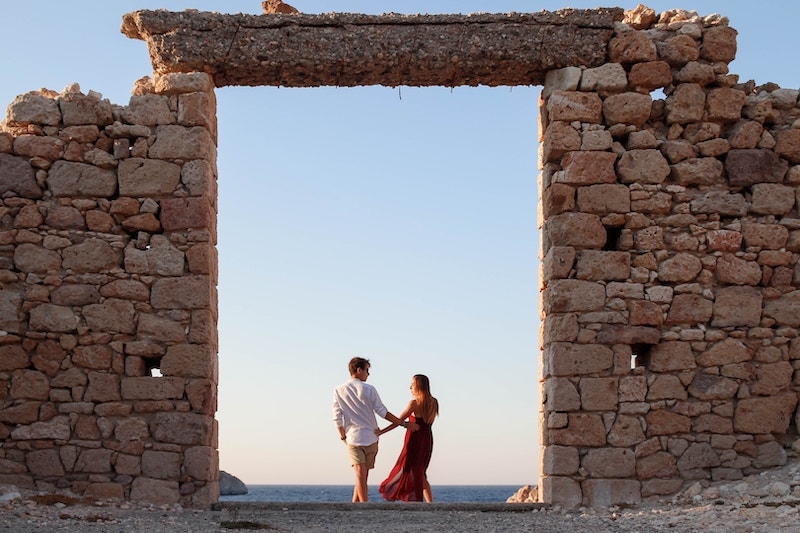
Exploring historical sites is more than just a trip back in time—it’s an opportunity to learn, reflect, and appreciate Philippine history. The cobblestone streets of old towns, the grand halls of Manila Cathedral, and the battle-scarred walls of Fort Santiago all hold stories of the nation’s past. By visiting these landmarks, you:
Deepen your cultural understanding
Experience firsthand the beauty of Filipino history, from the influences of Spanish aristocrats to the resilience of indigenous tribal traditions. Whether you’re admiring the natural wonders of the Philippines or exploring historic churches and forts, each site tells a unique story.
Gain a sense of national pride
Many of these sites symbolize Philippine independence and the sacrifices made to achieve it. At Rizal Park, where Jose Rizal was executed, you can reflect on his role as the country’s national hero. Meanwhile, the Rizal Shrine in Fort Santiago preserves his legacy through personal artifacts and historical exhibits.
Create meaningful connections
Whether with a partner, family, or friends, visiting romantic places steeped in history, such as Baguio City or the dancing fountain at Rizal Park, makes for unforgettable experiences. Walking through souvenir shops in heritage towns or standing on the actual site of important battles can inspire thought-provoking discussions and shared memories.
Support cultural preservation
Tourism plays a vital role in maintaining these sites, ensuring future generations can continue to appreciate their significance. Visiting Mactan Shrine, where Lapu-Lapu defended the island, or Fort San Pedro, a strategically located Spanish-era fortress, helps sustain these landmarks.
For those interested in wartime history, Corregidor Island, the site of one of the fiercest battles of World War II, offers a glimpse into the past with its Mile Long Barracks, where American soldiers once lived.
At Manila Bay, you can learn about the largest naval battle in the Pacific, while Japanese forces left their mark on historic locations across the country.
Best Historic Landmarks in the Philippines
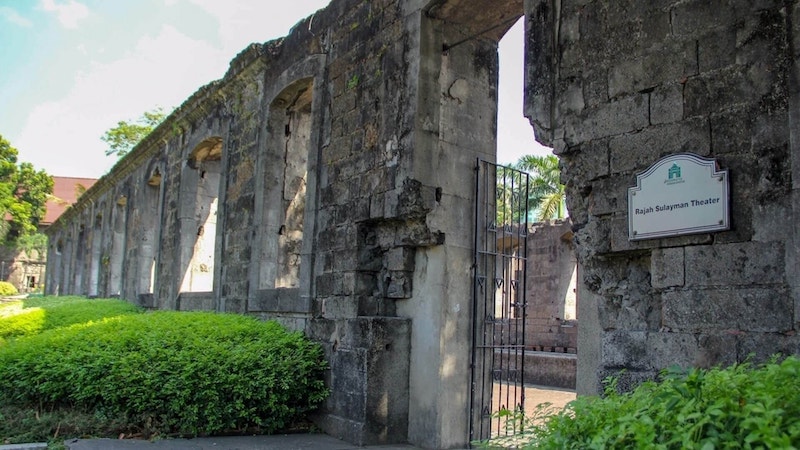
The Philippines is home to numerous historic landmarks that stand as testaments to the country’s rich and storied past. From Spanish colonial forts to World War II battle sites, these places offer a glimpse into the nation’s struggles, victories, and enduring heritage.
Whether you’re a history enthusiast or simply looking for a meaningful way to explore the country, these sites provide a deeper understanding of Philippine history and culture.
1. Fort Santiago (Manila)
Located within Intramuros, Fort Santiago is one of the most well-preserved historical sites in the Philippines. Built by the Spanish in the 16th century, it served as a fortress, prison, and execution site, with its most famous prisoner being Dr. José Rizal. Today, it is a popular tourist destination where visitors can walk through its walls, dungeons, and gardens, retracing the final steps of the national hero.
2. Corregidor Island (Cavite)
Known as the “Rock of Valor,” Corregidor Island played a crucial role in World War II. The island was a key defensive stronghold of American and Filipino troops against Japanese forces. Today, visitors can explore ruins, tunnels, and memorials while learning about the heroic battles fought here. The island also houses the Mile Long Barracks, a testament to its wartime significance.
3. Fort San Pedro (Cebu)
A bastion of Spanish rule in Cebu, Fort San Pedro is the oldest triangular fort in the Philippines. Initially built as a military defense structure, it later became a revolutionary stronghold during the Philippine Revolution. The fort now serves as a museum showcasing Cebu’s colonial past, with exhibits featuring artifacts from the Spanish colonial period.
National Landmarks and Museums
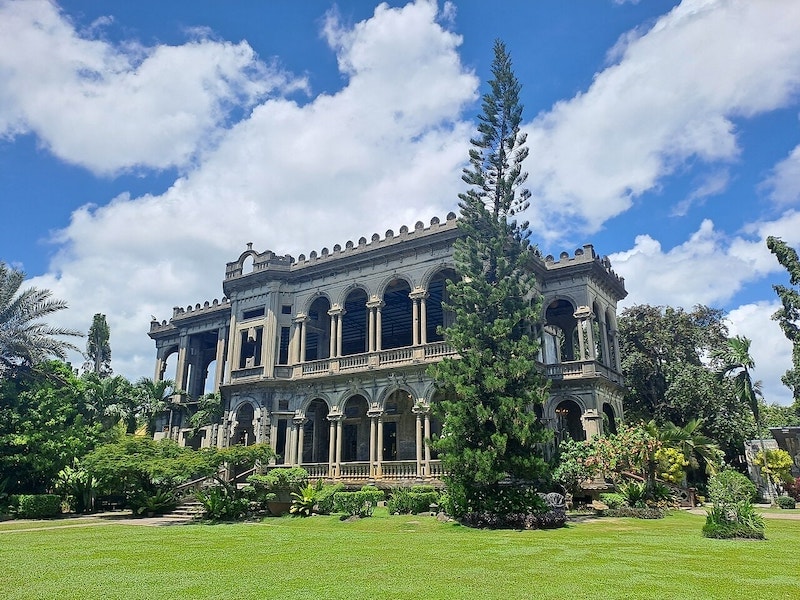
Beyond historic forts and battle sites, the Philippines is also home to national landmarks and museums that showcase its rich cultural heritage, artistic legacy, and colonial past. These sites preserve significant moments in Philippine history, from the introduction of Christianity to grand displays of Filipino artistry.
Whether you’re drawn to centuries-old relics, awe-inspiring architecture, or poignant love stories, these destinations offer a deeper appreciation of the country’s past.
1. National Museum of the Philippines (Manila)
For an enriching experience, visit the National Museum, home to significant artifacts, art, and historical exhibits. Here, you’ll find the world-renowned Spoliarium by Juan Luna, pre-colonial relics, and other exhibits that highlight the country’s history and artistic heritage. The museum complex includes the National Museum of Fine Arts, National Museum of Anthropology, National Museum of Natural History, and the National Planetarium, making it a must-visit for history and art enthusiasts.
2. Magellan’s Cross (Cebu)
A symbol of the arrival of Christianity in the Philippines, Magellan’s Cross was planted in Cebu City in 1521 by Spanish explorers led by Ferdinand Magellan. Encased in a protective structure, the cross stands as a testament to the Philippines’ colonial past and religious transformation. It is strategically located near Basilica Minore del Santo Niño, another important historic landmark.
3. The Ruins (Negros Occidental)
Known as the “Taj Mahal of Negros,” The Ruins is the remains of a mansion built by a wealthy sugar baron in memory of his beloved wife. Its romantic backstory and grand architecture make it a must-visit spot for couples and history lovers alike. Set against lush gardens and breathtaking sunsets, The Ruins is a perfect destination for those looking to experience both history and romance in one visit.
UNESCO World Heritage Sites
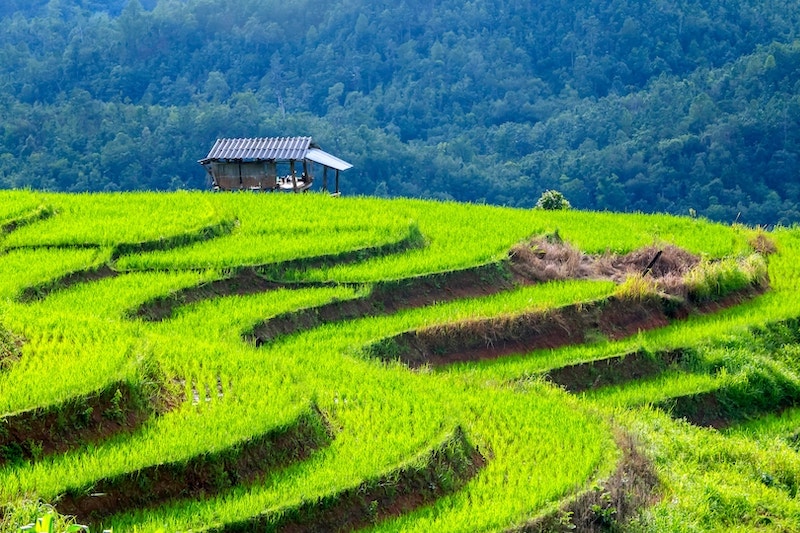
The Philippines is home to several UNESCO World Heritage Sites that highlight its rich history, architectural brilliance, and cultural heritage. These significant landmarks stand as a testament to the country’s indigenous ingenuity, colonial past, and deep-rooted traditions.
Whether you’re a history buff, an architecture enthusiast, or a traveler seeking romantic places with timeless charm, these destinations are must-visits.
1. Banaue Rice Terraces (Ifugao)
Dubbed the “Eighth Wonder of the World,” the Banaue Rice Terraces are a marvel of ancient Filipino engineering. Carved into the mountains over 2,000 years ago by the Ifugao people, these terraces symbolize harmony between humans and nature. Recognized as a National Cultural Treasure, they remain a testament to the resilience and skill of indigenous communities and are still used for farming today.
2. Baroque Churches of the Philippines
The country is home to four UNESCO-listed Baroque churches: San Agustin Church (Manila), Paoay Church (Ilocos Norte), Santa Maria Church (Ilocos Sur), and Miag-ao Church (Iloilo). These historic landmarks showcase Spanish-era architecture fused with local influences, reflecting the deep religious history of the Philippines. San Agustin Church, located inside Intramuros’ Walled City, stands as the oldest stone church in the country, while Paoay Church’s massive buttresses highlight the unique adaptation of Baroque design to the Philippines’ earthquake-prone environment.
3. Calle Crisologo (Vigan, Ilocos Sur)
A charming cobblestone street lined with Spanish colonial houses, Calle Crisologo in Vigan is a well-preserved reminder of the country’s colonial past. Once the home of Spanish aristocrats and wealthy traders, the street is now a romantic getaway, where visitors can take a kalesa (horse-drawn carriage) ride, visit souvenir shops, and admire the stunning ancestral homes that transport them back in time. Walking through Calle Crisologo feels like stepping into a bygone era, making it a perfect destination for couples and history enthusiasts alike.
World War II and Pacific War Memorials and Sites
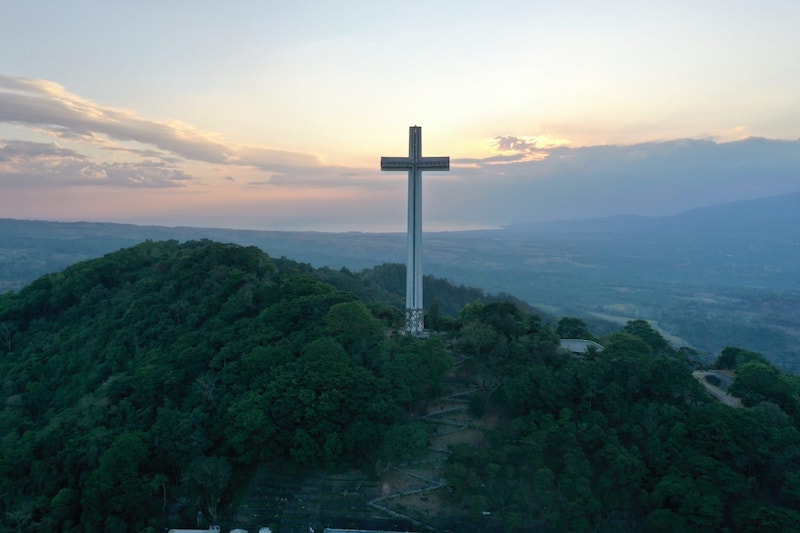
The Philippines played a pivotal role in World War II, witnessing some of the most significant battles in the Pacific War. From the largest naval battle in history to the courageous stand of Filipino and American soldiers, these sites serve as powerful reminders of the sacrifices made for Philippine independence.
Whether you’re a history enthusiast or simply seeking a meaningful journey, these memorials and battle sites stand tall as symbols of courage and resilience.
1. Lingayen Landings Monument (Pangasinan)
This historic landmark marks the actual site where Allied forces landed in 1945 to liberate the Philippines from Japanese forces. Located along the shores of Lingayen Gulf, the monument honors the American soldiers and Filipino fighters who bravely fought for freedom.
2. Mount Samat National Shrine (Bataan)
Also known as the Dambana ng Kagitingan, this national shrine commemorates the heroic stand of Filipino and American forces during the Battle of Bataan. Standing tall atop Mount Samat, the massive cross-shaped memorial offers breathtaking views of the surrounding landscape. This site serves as a solemn tribute to the soldiers who endured the Bataan Death March and fought valiantly for the country’s freedom.
3. MacArthur Landing Memorial National Park (Leyte)
One of the most iconic World War II sites in the Philippines, this memorial marks the Leyte Landing Memorial Park, where General Douglas MacArthur and his forces fulfilled his famous promise: “I shall return.” The larger-than-life statues standing in the waters of Red Beach, Palo, Leyte commemorate this historic event that led to the liberation of the Philippines.
Why Should We Preserve Historical Sites in the Philippines?
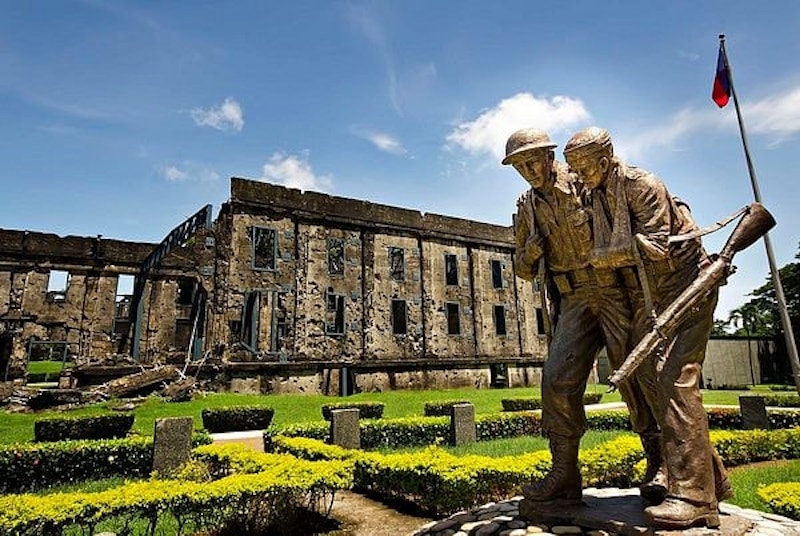
Historical sites serve as living reminders of the nation’s past, and their preservation is crucial for several reasons:
Cultural identity – These sites hold stories that define the Filipino people.
Education – Future generations benefit from learning about history firsthand.
Tourism and economy – Well-preserved landmarks attract tourists, boosting local economies.
Respect for heritage – Protecting these sites honors the sacrifices and achievements of those who came before us.
Supporting restoration efforts and responsible tourism ensures that these treasures remain for future Filipinos to appreciate.
A Legacy of Home with Camella
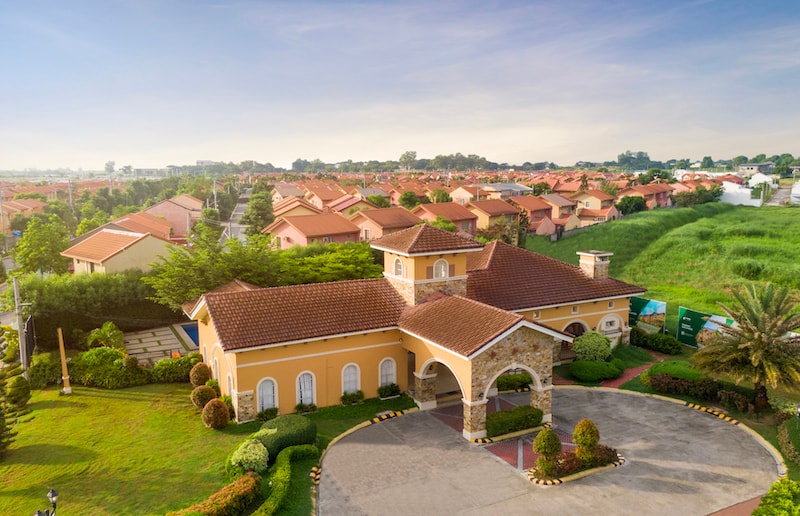
Just as historical landmarks stand as enduring symbols of the past, a home serves as a sanctuary where memories, traditions, and legacies are preserved for generations to come. The places we call home are not just physical spaces—they are living testaments to the love, resilience, and aspirations of the families who reside within them.
For over four decades, Camella, one of the country’s most trusted and leading real estate developers, has been at the heart of creating communities that reflect the essence of Filipino heritage while embracing the conveniences of modern living. Much like the cobblestone streets of Vigan or the walled city of Intramuros, Camella developments seamlessly blend timeless charm with contemporary comforts, offering a home where both history and progress thrive.
Beyond simply providing shelter, Camella’s master-planned townships and charming residential enclaves offer spaces where families can grow, celebrate milestones, and create a legacy of their own. With thoughtfully designed homes, well-curated amenities, and strategically located communities across the country, Camella continues to shape the way Filipinos live—by fostering a sense of belonging, security, and pride in every home it builds.
In a fast-changing world, where moments come and go, a home remains a constant—a place that holds the laughter of childhood, the warmth of family gatherings, and the dreams of future generations. With Camella, every family is not just investing in a house but in a home that will stand as a lasting landmark of love, heritage, and legacy.
Celebrating Love and Legacy in Historic Landmarks

This Love Month, go beyond the usual romantic places and explore the rich history of the Philippines. From the cobblestone streets of Ilocos Sur to the grand Barasoain Church, every landmark tells a story of love, heroism, and resilience. Walk through Casa Manila, visit Kalayaan Hall in Malacañang Palace, or stand where General Douglas MacArthur fulfilled his promise at the Leyte Landing Memorial.
History is also found in moments of unity—like the blood compact at the Sandugo Shrine—and in timeless tributes of love, such as The Ruins in Negros Occidental, built in memory of a late wife. Even in places like Luneta Park, where José Rizal made his final stand, or the oldest Chinatown, the past continues to shape our present.
Just as historical landmarks preserve our heritage, Camella builds communities that honor tradition while embracing modern living. This season, create your own legacy—visit these places with your loved ones, cherish shared stories, and find a deeper connection not only to history but to home.


